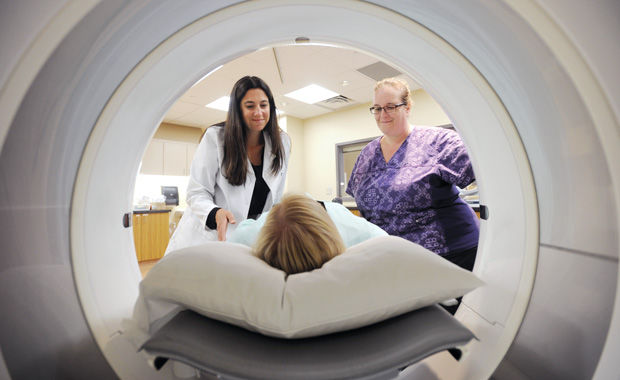Low-Dose CT Screening Could Help Lower Rate of Lung Cancer Deaths in Canada
Prevention and Treatment The earlier lung cancer is detected, the greater the chance the patient has of surviving. Fortunately, LDCT screening is here to help save lives.

Every day, Dr. Daria Manos diagnoses someone with lung cancer. “Many times these are patients whose lung cancer is so advanced they have checked into the emergency department,” says the Halifax-based thoracic radiologist. “It’s heartbreaking.”
The earlier any cancer is detected, the greater the chance the patient will survive. But in two-thirds of lung cancer cases, the cancer is already at an advanced, non-curable stage by the time it is diagnosed.
This is where low-dose CT (LDCT) screening could help. The test, which uses less radiation than a standard CT chest scan, provides more detailed images of the chest than an x-ray and is better at finding small abnormal areas in the lungs. LDCT screening can detect cancer in patients before they have symptoms.
Lung cancer kills more Canadians than any other cancer
In a large nine-year clinical trial in the U.S. participants who got LDCT had a 20 percent lower chance of dying from lung cancer than those who got chest x-rays. A Canadian study conducted between 2008 to 2014 also produced positive findings.
In 2016, the Canadian Task Force on Preventive Health Care recommended annual LDCT screening for lung cancer in high-risk adults between the ages of 55 and 74.
Yet while preventative screening programs are in place for breast, colon, and prostate cancer across the country they are not in place for lung cancer — even though lung cancer kills more Canadians than any other cancer.
Stigma stands in the way of widespread screening
Many medical experts attribute the lack of screening, in part, to the fact that 85 percent of lung cancer patients have a history of smoking. The stigma around smoking is so strong that lung cancer patients feel a sense of guilt. “Patients have said to me, ‘I smoked so I brought this on myself,’ says Dr. Jana Taylor, a thoracic radiologist affiliated with McGill University. “We need to push past this mentality.”
Dr. Manos, who is affiliated with Dalhousie University, adds that lung cancer risk is increased in patients with lower socioeconomic status.” She says that education is not an independent risk factor. Rather, it is used as a marker of socioeconomic status.
“We all have to be careful that we don’t allow our biases prevent us from supporting lung cancer screening as much as we support other types of screening,” she says.
